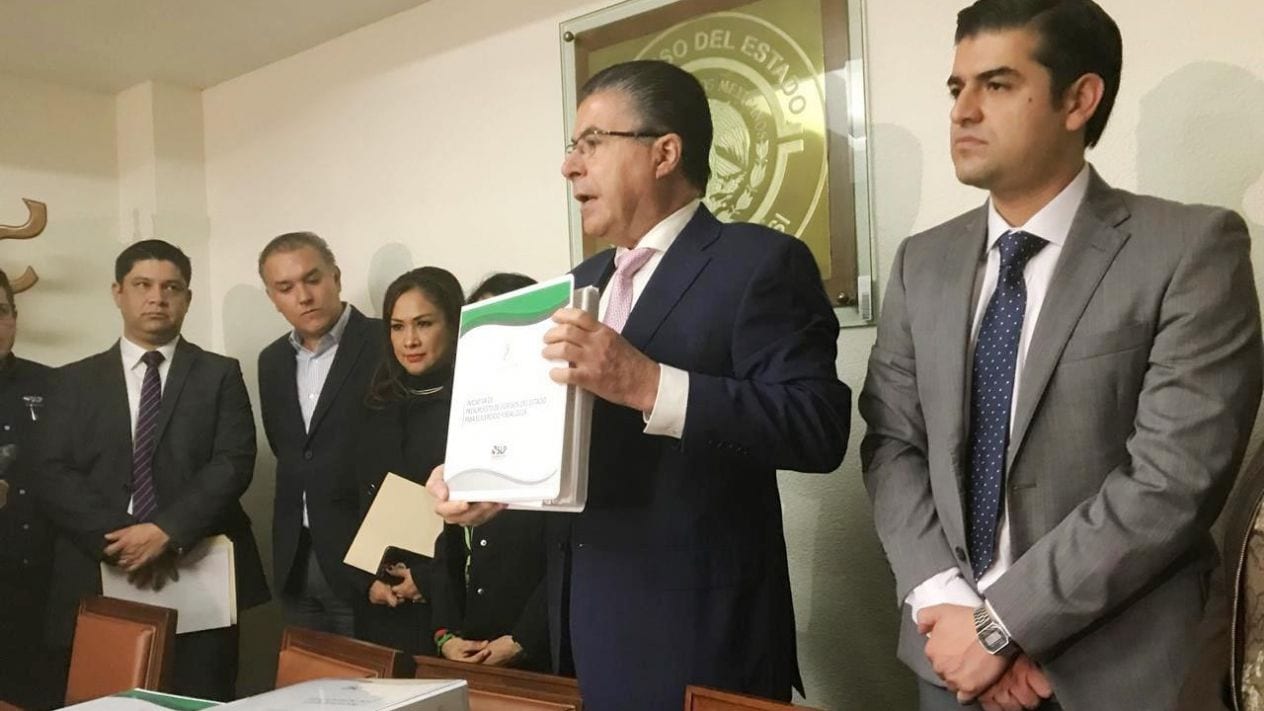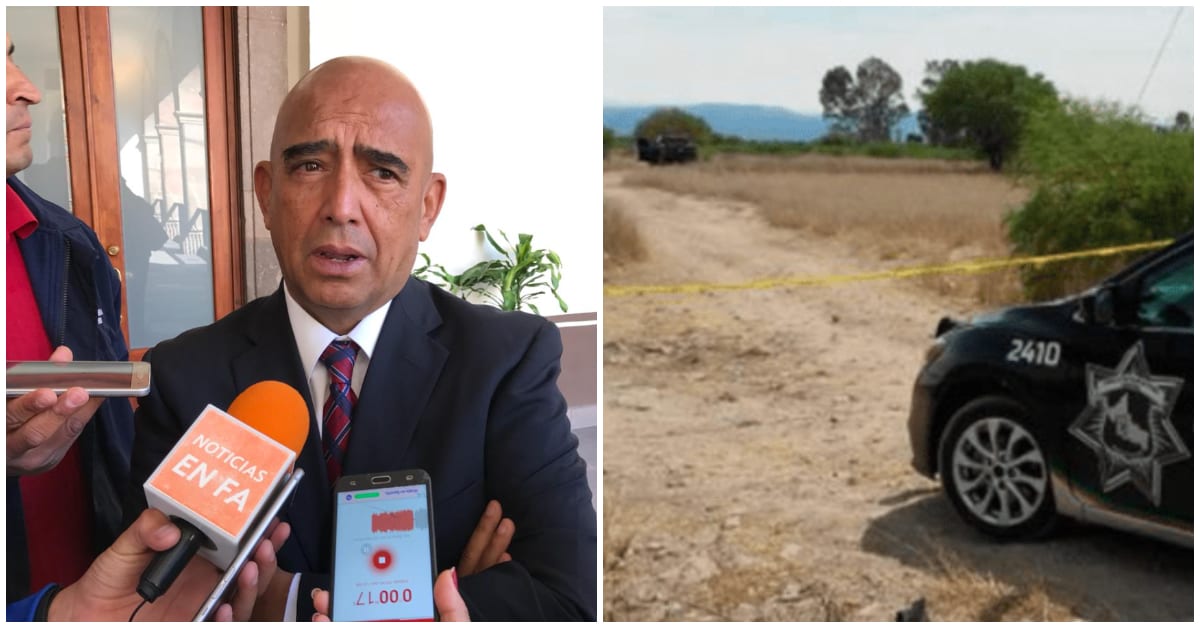ASAP
2019 Budget for SLP: Who wins and who loses?

The Plenary of the Congress voted the distribution of resources for this year
By Roberto Rocha
The greenhouse of Santa Rita could be considered the biggest loser in the State Revenue Law for next year, as the opinion of the Finance Commission of the State Congress, which was voted by the Legislative Plenary, reduced by 53.1 percent its entrance of money.
Last year, the Santa Rita greenhouse received 55 million pesos from the state government, while this year, only 25 million 784 thousand pesos will be invested.
The Production Center Santa Rita is a company that is dedicated to the production of tomatoes, which operates within the state public administration since 2004. The reports of in 2016 and 2017 showed an increase in revenues of 46.6 million pesos, which was largely absorbed by the payment of its workers, since 151.6 million pesos allocated to the payroll of 2016, went to 173.8 million pesos in 2017. Currently the salary of at least 5 managers and a worker of the center is higher at 174 thousand pesos per month.
However, there are several agencies and state agencies that will have a fall in their income for this year.
The Central Hospital, for example, although it is going through a transformation that will make it become a Specialty Hospital, will have fewer state resources this year, compared to those it received in 2018.
Last year, Ignacio Morones Prieto Central Hospital received 583 million pesos from the state government, while this year it will only have 507 million pesos, a reduction of 13 percent.
The Potosino Sports Institute will also have a slight decrease in its resources for this year, of 3.8 percent, which in real terms represents just over 400 thousand pesos.
The Higher Technological Institute of Tamazunchale will also lose 2.6 percent of its state revenues.
The Francisco Cossío Museum will have 14.4 percent less income than last year, same as the Ministry of Culture, which will have 7.99 percent less state money.
The State Institute of Educational Physical Infrastructure will lose 41.8 percent of its resources, since from 3 million 200 thousand pesos will pass to one million 859 thousand pesos.
Another big loser of the 2019 budget will be the State Institute of the Blind, which only had 21 thousand 910 pesos last year, but it will be cut to 2 thousand 360 pesos for this year.
On the other hand, the biggest winner will be the Secretary of Education of the State Government, which will have an increase of 139.5 percent, from 3 million 226 thousand pesos to 7 million 727 thousand pesos.
The Secretariat of Economic Development will also have an increase in the resources it will receive from the state, of 87 percent.
The Ministry of Finance expects to collect 36 percent more resources this year than in the past, with money coming mainly from the payment of vehicle control and the issuance of driver’s licenses, which will increase 36 percent each, according to the projections of that state agency .
Other state agencies will have important increases, such as the Historical Archive, which rose 363 percent; the Cultural Center Real of Fourteen 182 percent and the Cineteca Alameda, 103 percent.
The Technological University of San Luis Potosí will have 60 percent more resources than last year, like the Conalep.
MORE PUBLIC WORK … NOT LABELED
San Luis Potosí will increase public investment in expenses not labeled during this year, but it will reduce almost in the same proportion those that are made with labeled resources, that is, that they have a specific work as a specific destination.
According to the Expenditures Budget 2019 that were voted in the Plenary Session of the State Congress, unlabelled public investment will increase 38.4 percent by 2019, compared to the resources that the entity had in 2018. For the year that just started, public investment not labeled will be one thousand 370 million pesos, while the previous year was 989 million.
On the other hand, labeled public investment will have a reduction of 36.38 percent, since this year it will be 926 million pesos, while the previous year it was 1,457 million pesos. The substitution of resources labeled as unlabeled would, possibly, make it more difficult to maintain vigilance over the destination of the money for these works.
In general, this year, the labeled expenses will have an increase of 20 percent compared to the previous one. In 2018, this type of investments were for 19 thousand 605 million pesos, while for 2019, they will be 23 thousand 567 million pesos.
Among the non-labeled expenses, the only item that suffered a reduction was “property, real estate and intangibles”, which will go from one million 355 thousand pesos to zero this year. Of the rest, financial investments, materials and supplies, and general services will remain the same.
All other items of non-labeled expenses had growth: 38.4 percent of public investment; 32.2 percent of transfers, allocations, subsidies and other aid, 24.2 percent of “participations and contributions”; 12.4 percent, of “public debt”, and 7.6 percent of “personal services”.
On the other hand, the labeled expenses will have a marginal increase of just 0.2 percent, since they will go from 24 thousand 229 million to 24 thousand 284 million.
Only a few items of labeled expenses will grow: “Participations and contributions”, 10.5 percent; “Public debt”, 4.3 percent and “transfers, allocations, subsidies and other aid”, barely 0.99 percent.
Except for public investment with tagged resources, which will fall 36.38 percent, the rest of the items of labeled expenses will remain at zero pesos for this year: personal services; materials and supplies; General services; movable, immovable and intangible assets; and financial investments.
In total, the expenses of San Luis Potosí will grow 9.1 percent this year, compared to 2018. The 2019 Budget will be 47,852 million pesos, while last year it was 43,835 million pesos.
Also read: Nava’s temper tantrum

ASAP
#MeToo exhibits potosino writer

La Orquesta collects two testimonies against AlfredoPpadilla, one of those who most complaints in networks has accumulated
By María José Puente
“True to my habits only as intelligent and insightful females, which in these days of Internet and palliatives are irretrievably difficult to find…”
Alfredo Padilla | April 2015
…
The previous fragment is part of a text that the writer Alfredo Padilla published in April 2015. Words more, words less, man uses prose to describe a relationship (in which the emphasis is placed on his superior qualities) with a girl that he fantasizes about killing her… to eat her.
…
Seldom as in San Luis Potosí, the #MeToo took on such a literal meaning, because the strenght of the movement at the national level and a first complaint with the HT #MeTooEscritoresMexicanos led a handful of girls to tie the ends of a history of harassmentvand intimidation that, for some, even, began a decade ago with a common factor: Alfredo Padilla.
“I did my internship in a visual arts magazine here in San Luis and one of my activities was to be in contact with the collaborators through Facebook. Then there was going to be an event and I had to be in contact with this person for logistics issues.
He would answer what he had to answer, but he always took the opportunity to mention something about my body. First it started very light and then it was increasing in tone. First, it was like, “you are very pretty” and then it was like “I like some part of your body”, until I got to “I dreamed with you and I want to do this to you”.
The experience of Diana* occurred almost 5 years ago and although she denounced the artist’s attitude, her superiors dismissed the story arguing “no, they have known him for years, he has a family, he may be confused”.
Nothing happened.
“Get the cross into your pussy”
Years later, while Adriana *, another girl, read a text of her authorship in a cultural event, the writer listened to her and at the end of her speech he addressed her:
“They introduced us, we had friends in common and he told me that he really liked my texts and that is the first approach, the first contact we made. He asked for my mail, he even asked me for my texts, he asked me if he can get them and I said yes”.
I had read it before; I was cool about some things he said and I was touched by the idea that a writer I knew would also like my work. I just gave him my email, but then he sent me a message via Instagram and starts following me through that network. “
…
As described in his text and as reported by the victims, Padilla has made social networks his habitat to stalk and with this he seems to have added his victims to the only official statistics that the Inegi has published on the subject, in 2015: At least 9 million women in Mexico have been victims of cyberbullying.
At first, the writer sought to entangle Adriana with the false promise of placing some of her texts in the spaces that published it, argument that fell when the girl met another girl, also possible victim of Padilla, and with whom she worked in a cultural cut fanzine. He never mentioned the possibility of including the promised texts.
“Then he asks for my WhatsApp. We started talking about it and the questions become a little more personal, such as what I do, where do I work. When I told him that we could not date there was some discomfort.
He started to get annoyed when he started insisting on dating me and when he started to be insistent on whether I liked him. I told him that I did not like him. At that time I also told her that I had a boyfriend.
Suddenly one day, out of nowhere, he asked me: what color are your panties today? I know how easy it would have been to block it, but I did say, “Hey, not these questions; I’m not comfortable. “
Sometimes he blocked me when I told him that I was not interested if our relationship was not strictly laboral. Then he talked to me again and again, his harassment was more direct and he continued to ask me questions of a more sexual connotation.
I remember once fighting through WhatsApp. That was the time I blocked him from that network because I told him that I was not interested and he, I remember a lot of this phrase: he told me then to put the cross in my pussy”.
…
Both Diana and Adriana work in professional fields that constantly cross the circle of their aggressor, so it was not surprising that, after sharing some details, they discovered that both had been their victims and that there could be more. And they found them.
Since March 23th, when #MeTooEscritoresMexicanos started its climb on Twitter, Padilla was placed as one of the characters that accumulates more complaints, even equating to the profile of Herson Barona, the protagonist of the case that triggered the digital movement.
For the victims of the Potosino writer, that was the green light to make public their denunciations, some openly and others anonymously, the latter characteristic that has provoked the turn of the digital discourse around the legitimacy of the claims and the appropriate forms of formalize the accusations.
In this regard, Urenda Queletzú Navarro Sánchez, an academic from the Autonomous University of San Luis Potosí and an activist for women’s rights, dismisses the criticism:
“It is expected that, given the insufficient response from the State, the authorities in the different areas where young women have manifested the violence committed against them, that they resort to this type of movement, which allows them to enunciate all their aggressors and their violence and, above all, that have allowed them to find in the public space others who have experienced the same violence or with different magnitudes”.
The activist refers with irony that shortening the options of victims to the bureaucratic labyrinth of imparting justice in public institutions is to act on the only guarantee of impunity.
“It is well known among those who get involved with the courts that, if they do not mobilize before a violent death, much less they will mobilize before a complaint that they consider to be a normalized cultural practice; that is, the state apparatus is not willing to move beyond what women themselves have forced them to move in the face of the emergence of feminicidal violence.
How can we expect them to respond to our complaints of harassment if, with what is extreme, they do not mobilize?”
On more than one occasion, Potosinos officials whose jurisdiction is the Security or the Procurator of Justice, have emphasized that violence against women is a matter of cultural nature that develops in the family and that in that is protected and encouraged.
For example, during his appearance before the State Congress, in mid-2018, Federico Garza Herrera, Attorney General of the State, suggested that women are also omitted as they often do not report cases of violence or do report them and then repent.
In this context, in which the San Luis Potosí authorities demand that women “do their part” to enforce their right to justice, more than one victim has lost his life at the hands of his aggressor because, after filing complaints and requesting measures of protection, these have not been executed.
…
In what is perhaps the most chilling point of her case, Adriana tells how, after having blocked all communication with her attacker, one day, upon arriving at her house, he was waiting outside in the company of an unknown man.
“I’m coming and since I’m outside I see that he is there waiting for me, away from the house, but looking towards the facade, toward the windows as if he had already ringed and was waiting for someone to look out.
I was very surprised and at the same time I became paralyzed and angry. The first thing I asked was: “What are you doing here?”, And he said: “I came looking for you”.
I said “you know that I have you blocked from all sides. You can not come looking for me like that at my house. “At that time there was a new pet, then I opened the door, I got to grab it, and in that they enter.
I had a low battery in my cell phone; I did not know what to do and I told them I was leaving. I sent a message to a friend, I tell him that this guy came to look for me and he says “I’m going there”.
Once inside the house, Alfredo begins to tell me: “you are nervous; why are you nervous? Why are you so tense? What’s up?”
I was afraid that they physically assaulted me, so one of my first actions was to open the window and I thought “if I have to shout, all the neighbors are going to listen to me”. He began to move around the house, I was very tense “plugged in” with the cell phone to the charger while waiting for my friend to arrive.
In a moment that I turn around they are making gestures with the head; they did not talk to each other, they communicated by shaking their heads. I felt that I could not move, I did not want to turn my back on them. He begins to insist on taking me where I was going to go and when I toldl him that a friend was coming, at that moment it was very, very fast, they left”.
…
The complaints that the author accumulates in the #MeToo range from attempts to drug his victims, sending unsolicited intimate images; and harassment in public and private places. What is worse, one of the victims claims that Padilla confessed to harassing but he was unable to contain himself.
Diana reports that after having made her complaint publicly on Facebook, at least three women have been recognized victims of the same person.
“There is a case of a girl who says that ten years ago she had a situation with him. I believe that (the complaint through the #MeToo) is also a way to alert more women and also to know who the aggressors are”.
Adriana considers that “now that she detonated and that Alfredo Padilla was appointed more times, in addition to those we knew, we were relieved to know that it was not our wave. That we were not inventing and that everything that happened is not our fault either.
I would like to say that I feel calm to know that I am accompanied by other women who are also pointing out and denouncing him publicly, but what keeps me feeling uneasy is thinking about women who still do not know this”.
…
In an ideal world, concludes Urenda Queletzú, the #MeToo should bring with it “that those aggressors inhibit their behavior. Let them know that, if they continue to rape women, women will come out and place their names in the public arena.
This has the possibility of subverting the situation that is generated between a victim and his victimizer, where he enjoys impunity, enjoys his non-existence and places the victim in a confrontational condition before him “.
…
La Orquesta: Are you afraid?
Diana: The truth is I’m not afraid for myself, but for the others. Of course, no aggression is minor but compared to other cases, I am not afraid of this person. It produces a lot of impotence and courage that still goes there as if nothing aggravated more women and nothing happens.
Speaking specifically about this aggressor, who has been operating in this way for years and who is still there in cultural spaces, in academic spaces, I am afraid of others.
Also read: Gender Alert is not a magic wand: says Caco Leal about femicides
ASAP
SLP City Council spends 320 thousand pesos on trips

Only the mayor registered per diems for 82 thousand pesos, in eight different visits to the CDMX
By La Orquesta
Between the beginning of the administration of Xavier Nava Palacios and January 12 of this year, the City of San Luis Potosí has spent 320 thousand 826 pesos with 69 cents in 41 trips made by municipal workers in those first 103 days of the mayor’s office.
This represents an expense of 7 thousand 825 pesos for each trip made by municipal officials.
The daily average of travel expenses in the City of San Luis Potosí for that period was 3 thousand 114 pesos.
Only the mayor Xavier Nava Palacios spent 82 thousand 402 pesos in eight different trips, all to Mexico City.
The first one, on October 18 of last year, for 11,647 pesos, was to visit the State Water Commission and Pemex. Then, on November 19, Nava Palacios visited the Tax Administration Service with a cost to the treasury of 10,567 pesos.
On November 30, the mayor spent 4 thousand 582 pesos on a trip to Mexico City to take a protest as vice president of the National Association of Mayors. For that same trip there is a charge for 3 thousand 711 pesos.
Then, on December 12, Nava Palacios traveled to a meeting with members of the Budget Committee of the Federal Chamber of Deputies, with a charge to the treasury for 8 thousand 526 pesos.
In three meetings with the Federal Electricity Commission, in an attempt to have the municipality’s debt for the electricity service condoned, on the pretext that it was necessary to cover the expenses of the Interapas, the mayor spent a total of 43 thousand 639 pesos.
The first trip, from January 7, had a cost of 11 thousand 690; the second, ten days later, cost 12 thousand 240 pesos. For the third, on January 22, the mayor spent 19 thousand 709 pesos.
Other expenses in travel expenses, although not made by the mayor Xavier Nava Palacios, were carried out for work tables on public security issues.
On October 24 of last year, a total of 21 thousand 925 pesos in travel expenses was paid to a guest for these meetings. Another payment, for 20 thousand 919 pesos, had been made on October 3.
On January 9, 14 thousand 914 pesos and 10 thousand 102 were paid on December 12. The lowest payment for this concept was for 5,652 pesos, on October 24.
A payment of per diems for 18,121 pesos allowed the director of Catastro, Patricia Rodríguez Álvarez, to travel to the National Real Estate Congress of Oaxaca, on November 28 of last year.
The director of municipal tourism, Yara Mariana Nagore Rojas spent 14 thousand 368 pesos on a trip to the Chocolate Festival in Tabasco, in November last year.
The technical secretary of the City Council, Jorge Francisco Arias Hernández, spent December 4 last year 12 thousand 333 pesos in a visit to the National Commission for the Efficient Use of Energy, for an assignment that was called “infrastructure projects for the municipality”.
In a working visit to Zapopan, Jalisco, according to the way in which those travel expenses were described by the transparency area of the City Council, the director of Economic Development of the municipality, María Esther Velázquez Esparza, spent 11,110 pesos.
Also read: Deputies will analyze illegal purchases of the City Council of SLP
ASAP
Gender Alert “is not a magic wand”: says Caco Leal about femicides

The State Human Rights Commission affirmed that the Secretary of Public Security fail to implement security and prevention measures in cases of violence against women.
By Josè Luis Vázquez
The Secretary General of the Government of the State of San Luis Potosí, Alejandro Leal Tovías, stated that the Gender Violence Alert issued in different states of the Republic is not a “magic wand” that avoids femicides.
These statements come after the State Human Rights Commission (CEDH) affirmed that the Secretary of Public Security and the Attorney General of San Luis Potosí fail to implement security and prevention measures in cases of violence against women.
“We are complying with what the Gender Alert says, but it is not a magic wand that solves the situation nor have the femicides automatically descended, it is an effort of all, we all have to enter this to give certainty and security to women”, he said.
In that sense, the official explained that the Gender Alert issued in six municipalities of the state “is a regulation and a route to meet a series of requirements for prevention, however, this is not a limitation for the government, we are working enormously in this, the great advantage is that most of the femicides have been solved, more than 70% are intrafamilial problems, of couple, of courtship”.
Then he added: “this does not justify or give us peace, we continue working, doing polygons in colonies with new security strategies, (…) that there is a certainty that all women could travel at any time of the day, we have not failed, but we have a lot to do”.
When mentioning that the CEDH affirmed that several femicides registered in San Luis Potosí could be avoided with a proper coordination of authorities, he said: “we have avoided many cases thanks to shelters and women’s centers, there are others that we have not managed to avoid, but this is not a justification, it’s good that we can do it, but we need zero tolerance “.
Also read: CEDH seeks Gender Alert for three more municipalities of SLP
-
Destacadas2 años
Con 4 meses trabajando, jefa de control de abasto del IMSS se va de vacaciones a Jerusalén, echando mentiras
-
Ciudad3 años
¿Cuándo abrirá The Park en SLP y qué tiendas tendrá?
-
Ciudad4 años
Tornillo Vázquez, la joven estrella del rap potosino
-
Destacadas4 años
“SLP pasaría a semáforo rojo este viernes”: Andreu Comas
-
Estado2 años
A partir de enero de 2024 ya no se cobrarán estacionamientos de centros comerciales
-
Ciudad3 años
Crudo, el club secreto oculto en el Centro Histórico de SLP
-
#4 Tiempos3 años
La disputa por el triángulo dorado de SLP | Columna de Luis Moreno
-
Destacadas3 años
SLP podría volver en enero a clases online
























